Smoked Brisket is the quintessential smoker recipe that everyone loves and few master. If you scan the BBQ groups on social media, you’ll see countless questions and debates about the best methods, which seasonings to use, whether you should wrap or not wrap, how to tell when a brisket is done, and the proper way to rest it.
There are some wrong answers to those questions, but there are a LOT of right ones, too.
In this article, I’m going to walk you through some of the best techniques and we’re going to answer most of the common questions people have when smoking this elusive, giant cut of beef.
How to Pick the Right Brisket
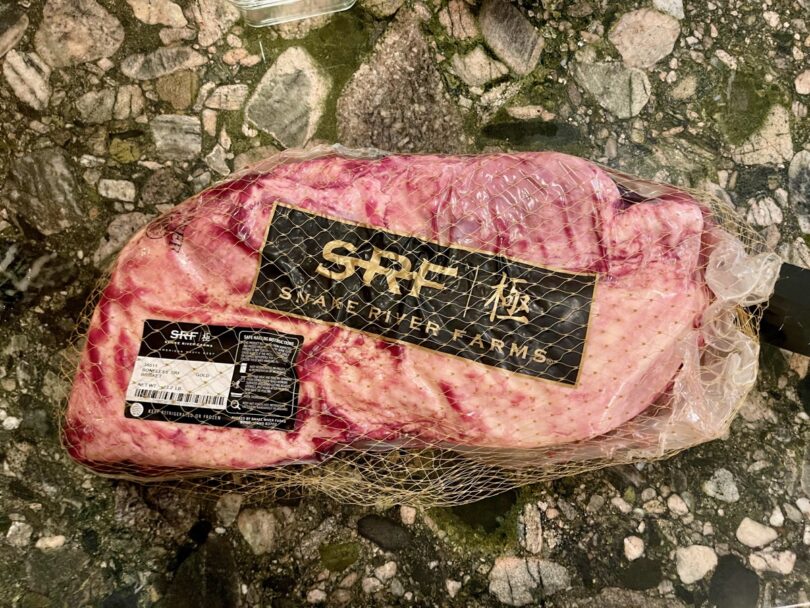
Meat Selection is so important when it comes to getting your perfect end results. Whether you’re going choice or prime, American Wagyu or Angus, there are a lot of options out there. The only thing I recommend is staying away from Select cuts, and sourcing your meat from a reputable source. We typically buy brisket from our local butcher, Costco, or when we want to splurge, Snake River Farms.
Should I choose USDA Prime, Choice, or Wagyu brisket?
- Prime: Better marbling, worth the extra cost for juiciness.
- Choice: More affordable and still good, but less marbling than Prime.
- Wagyu: Expensive, but incredibly tender and flavorful.
So, what’s the difference between a flat, point, and whole packer brisket?
Flat: Leaner, rectangular, slices well; good for sandwiches.
Point: Fatty with more marbling, better for burnt ends.
Whole Packer: Includes both flat and point muscles, ideal for smoking to get both lean and fatty meat.
How many pounds of brisket do I need per person?
Aim for ½ pound per person, uncooked. After trimming and cooking shrinkage, it yields about ⅓ pound per person.

How to Properly Prep a Brisket
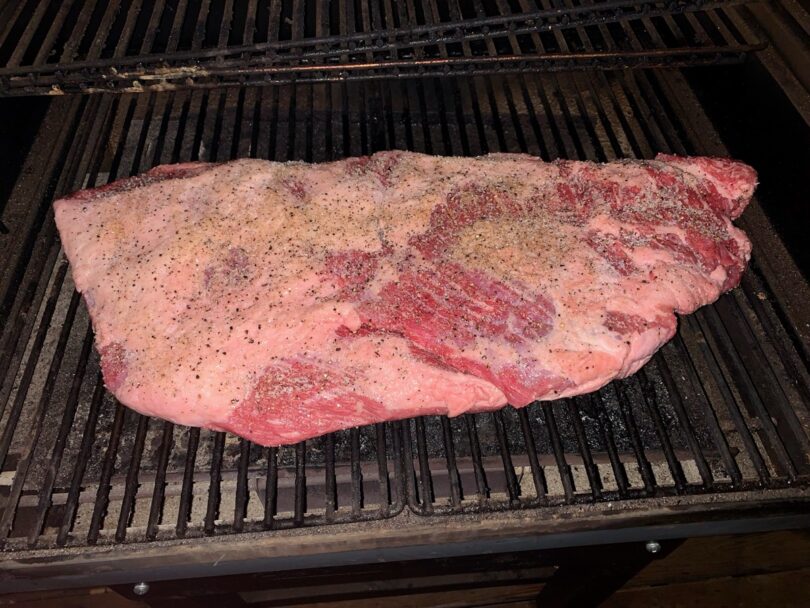
Trimming a brisket is essential. They come with excessive amounts of fat right out of the package, which doesn’t ultimately help the end result. There are some great YouTube tutorials that’ll show you the way. Here are some common questions people have when trimming brisket.
How much fat should I trim off?
Leave ¼ inch of fat on the surface. Trim off excessive hard fat and silver skin.
Should I leave the fat cap on, and if so, how thick?
Yes, leave ¼ inch of fat. This layer helps protect the meat during long cooking.
Do I need to remove the silver skin?
Yes, remove the silver skin from the flat as it won’t render and can block seasoning absorption.
See a tutorial video: Meat Church Brisket Trimming Tutorial
Seasoning and Marinades
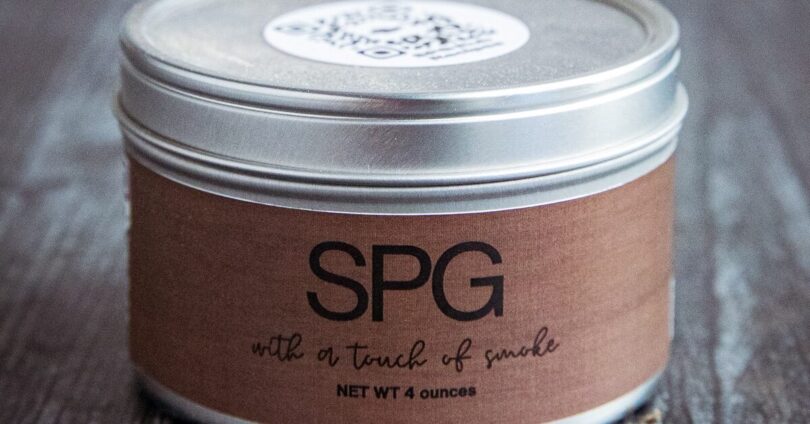
What’s the best rub for brisket?
A classic rub for brisket is salt and black pepper (Texas style). Optionally, you can add garlic powder, paprika, or chili powder to spice things up a bit.
Should I inject brisket?
Injecting with beef broth or seasoning mixtures adds moisture, especially if using a leaner less-marbled grade of beef.
How long should I let the brisket rest after seasoning?
1-12 hours in the fridge is fine. Overnight gives deeper flavor absorption, but even an hour is fine.
Smoking Setup and Temperature

There are a lot of options out there for tools and cooking methods for brisket. Many people claim to be the authority, but the truth is there are a LOT of paths to get to an excellent brisket at the end of the day. Below are some common questions that we hear from readers when chatting about cooking brisket.
What is the ideal smoker temperature?
225°F to 250°F for a low and slow cook. For faster cooks, some go to 275°F.
Should I use charcoal, wood, pellets, or electric?
We prefer the pellet smoker for brisket, but you can use any type of smoker you have as long as you are good at maintaining the temp.
What type of wood works best?
This is all down to your own personal preference. Here are some notes about common types of woods. Make your choices accordingly, or use a mix!
Oak: Classic, mild, and versatile.
Hickory: Strong, slightly sweet.
Mesquite: Bold, works for Texas-style brisket (but use sparingly).
Fruitwoods (apple/cherry): Light, sweet smoke.
Cooking Techniques
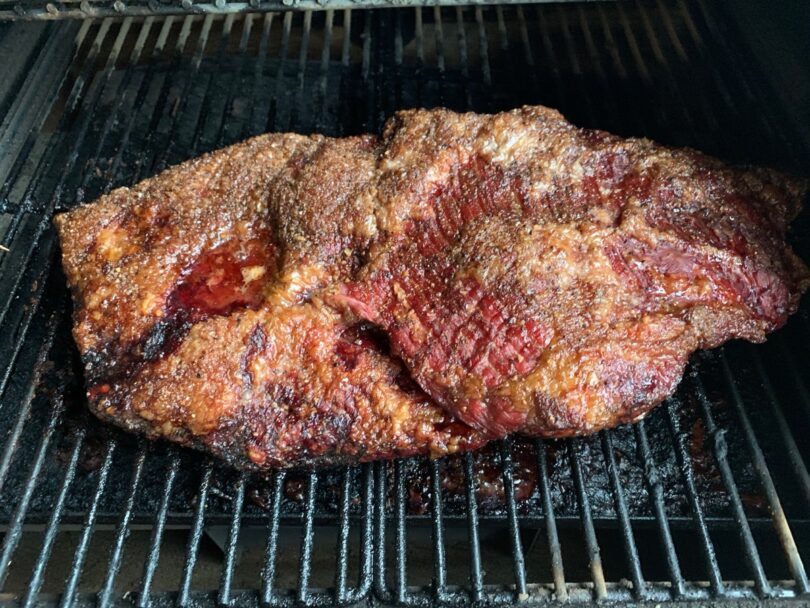
Fat side up or fat side down?
Fat side down is preferred to protect the meat from direct heat on most smokers. Fat side up works if heat comes from above.
Should I wrap the brisket (Texas crutch)? If yes, butcher paper or foil?
Wrapping helps retain moisture and speed up cooking.
Butcher paper: Preserves bark better, breathes more.
Foil: Traps moisture for softer bark but prevents drying out.
When should I wrap—what temperature?
Wrap at 165°F, when the bark is set, and the brisket hits the stall.
Get our recipe: Traeger Smoked Brisket
Timing and Internal Temperature

It is important to keep a close eye on temperature when you’re cooking brisket, so get yourself a good instant read thermometer or even better, a wireless thermometer.
How long does it take to smoke a brisket?
This is a tricky question because each brisket is unique, and the amount of time it takes depends on the meat, the smoker, the ambient temperature, how many times you open the lid, and many other factors. Use the below guide as a VERY rough estimate, and no matter what – LISTEN TO THE MEAT.
1 to 1.5 hours per pound at 225°F. A 10-pound brisket takes 10-15 hours.
What is the ideal internal temperature to pull the brisket off?
200-205°F internal temp in the thickest part (usually the flat).
How do I know when the brisket is done—temperature or feel?
Both are important. When a probe slides in with no resistance (like butter), it’s done.
Handling the Stall
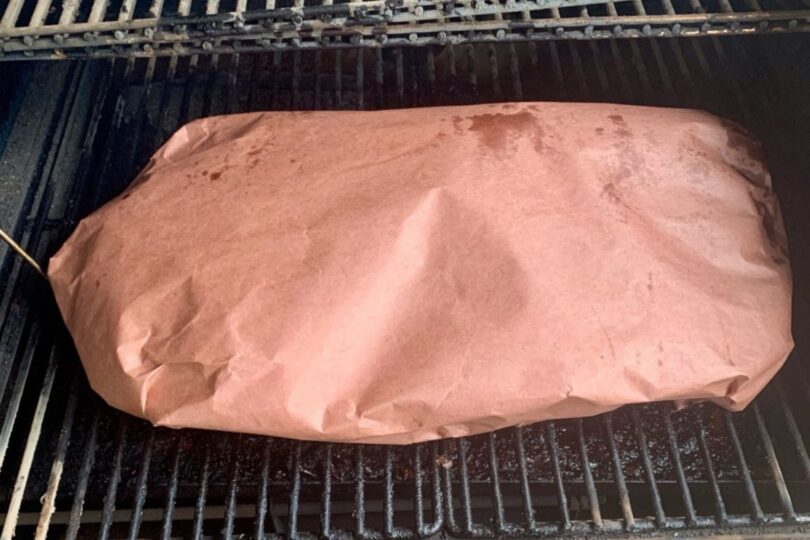
What is the stall?
The stall occurs when the brisket’s internal temperature stops rising (usually around 150-170°F) due to evaporative cooling.
How long does the stall last, and how do I get through it?
The stall can last 1-3 hours. Wrapping the brisket helps break through faster.
Should I increase the temperature to power through?
Some raise the smoker to 275°F during the stall, but it can risk drying the meat if not monitored.
Resting and Slicing
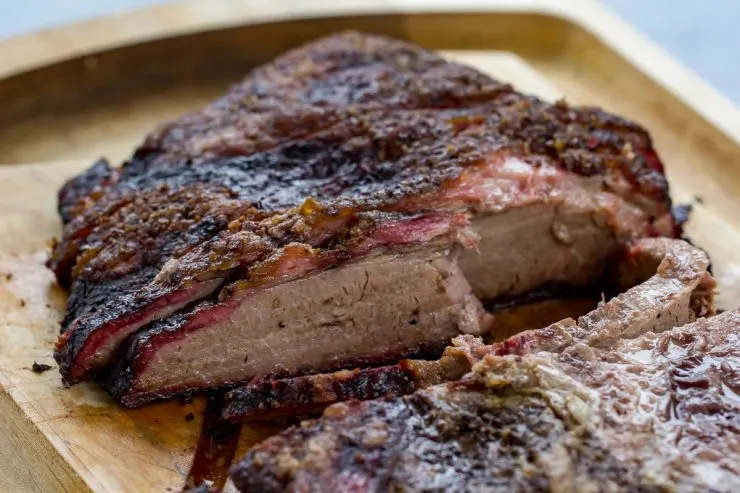
How long should I rest the brisket after cooking?
1-4 hours is ideal. This allows juices to redistribute.
Should I rest it in a cooler or leave it on the counter?
Rest in a cooler (without ice) wrapped in towels to keep it warm longer.
Serving and Leftovers
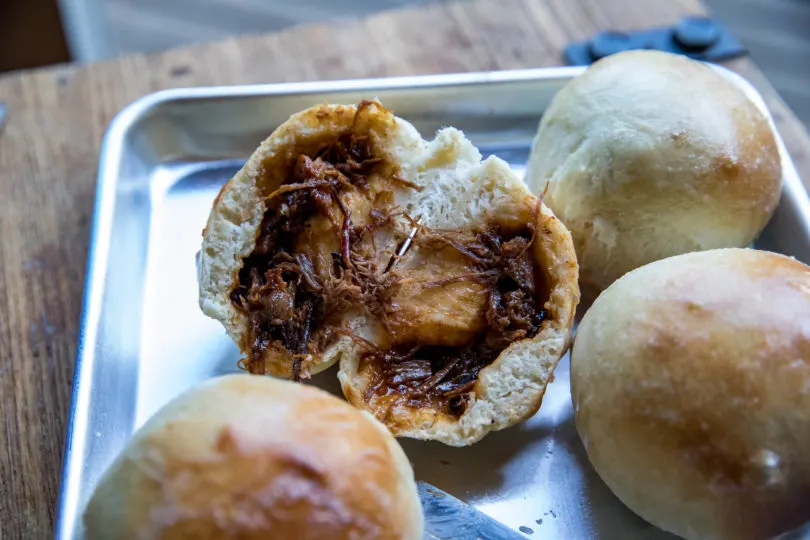
Serve brisket with your favorite sides. Stay tuned for my slideshow full of my favorite slides, with recipes! Brisket leftovers are also amazing to repurpose into other dishes. From the brisket bombs you see above, to quesadillas, soups, stews, enchiladas, tacos, and more, always make a big brisket. It is perfect for freezing and using for so many other things.
How do I keep brisket moist after cooking?
Keep it wrapped in foil or butcher paper and store it in a cooler or a warming oven if holding for a few hours.
What’s the best way to reheat brisket without drying it out?
Reheat in foil with broth or sauce at 275°F until warmed through.
How long does smoked brisket stay good in the fridge or freezer?
Fridge: 4-5 days.
Freezer: Up to 3 months (wrapped tightly).
Troubleshooting
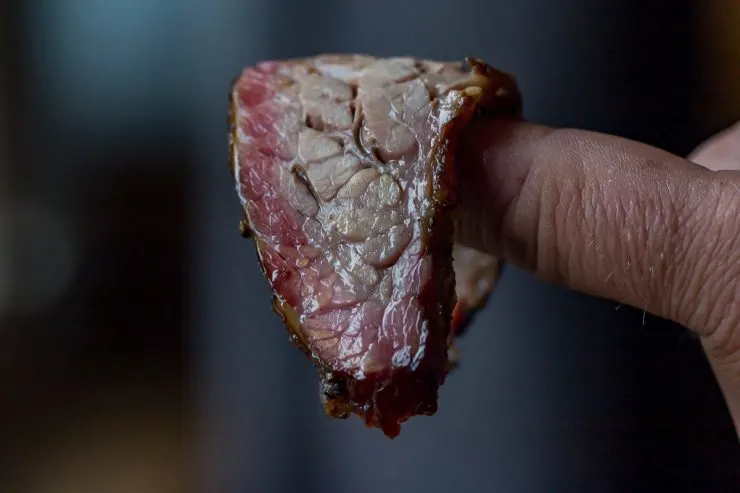
Why did my brisket turn out dry?
Possible causes: Overcooked (past 205°F), not wrapped in time, or insufficient fat. Injection or higher marbling can prevent dryness.
How do I prevent the bark from becoming too hard?
Monitor the smoker’s temp, and avoid excessive sugar-based rubs that can crust. Wrapping helps soften the bark if needed.
What do I do if the brisket cooks too fast?
Rest the brisket in a cooler wrapped in a towel to hold until serving. This can be anywhere from 1-4 hours.
